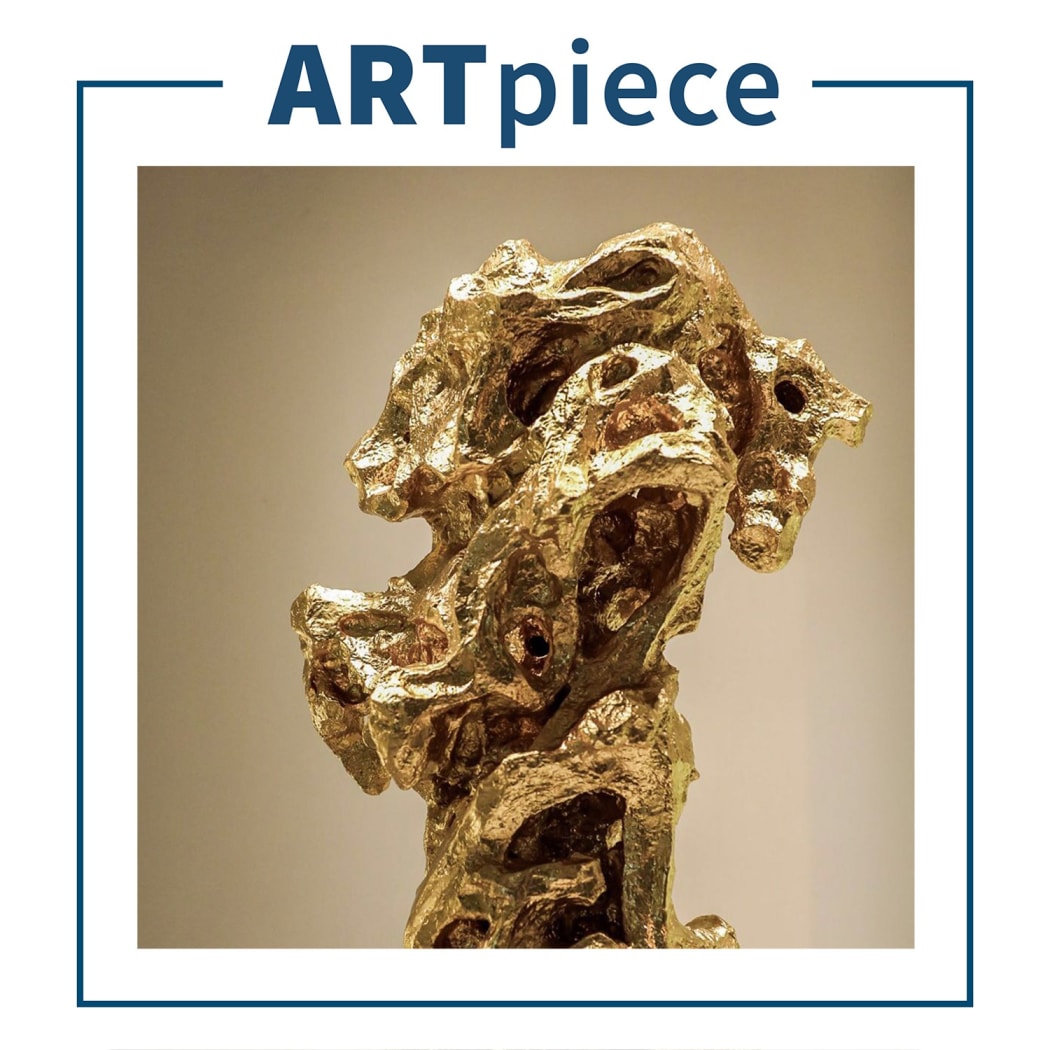
For this week's ARTicle, we are delighted to share with you a comparison of TJ Ren's gilded bronze sculpture, East Wind, and a ‘calico’ Lingbi scholar’s rock from the Qing dynasty (1644-1911). A fine example of our gallery's specialism, Eastern Origin and Contemporary Expression, TJ Ren draws upon this cornerstone of Chinese culture to create a dialogue between the present and the past.
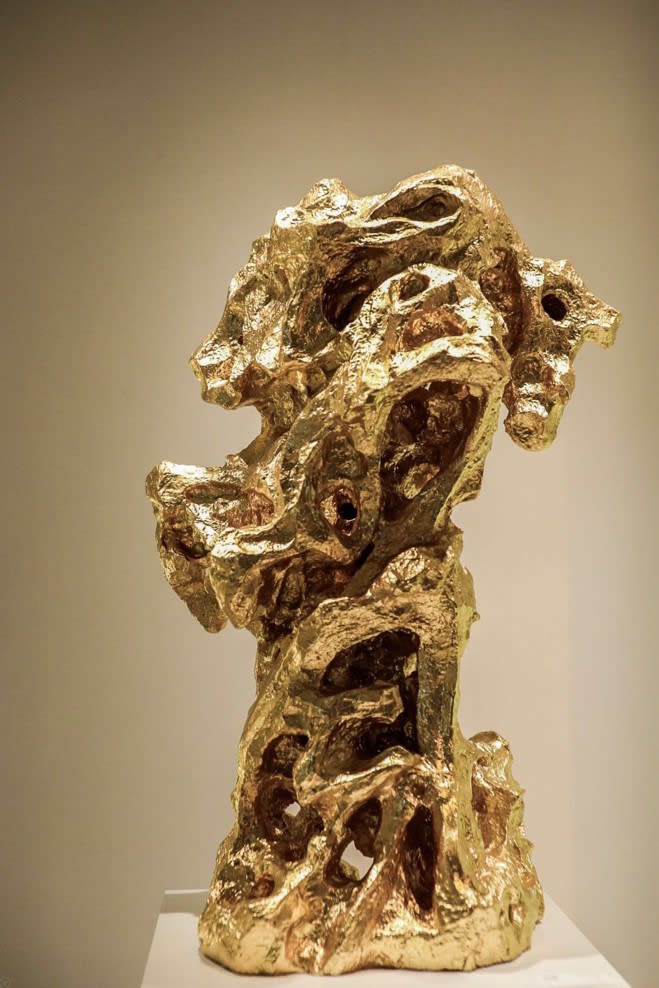
TJ Ren, East Wind, 2019, Cupronickel, bronze gilding with 24K gold, 58 x 52 x 120 cm
“Like a landscape painting, the rock represented a microcosm of the universe on which the scholar could meditate within the confines of his studio or garden,” says Robert D. Mowr, who is Harvard Art Museum’s Curator Emeritus, “Although most scholar’s rocks suggest mountain landscapes, these abstract forms may recall a variety of images to the viewer, such as dragons, phoenixes, blossoming plants and even human figures.”
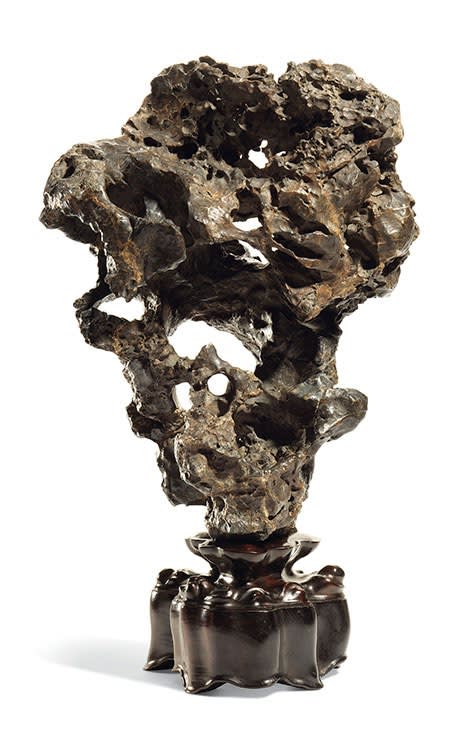
The sculpture East Wind, created by artist Ren Tianjin in 2019, is based on the traditional Chinese culture of scholar’s rocks. Scholar’s rocks were found in nature and on occasion enhanced by carving and piercing the stones, or making inscriptions. Having a long history of over 2000 years in China, these stones served as a valuable tribute to the nobility, which emphasised the importance of demonstrating people’s social status and maintaining social bonds. The Chinese scholar drew inspiration from the natural world; he did not go out into nature to paint or compose poetry, rather, he worked within the seclusion of his studio and used these ‘representations of mountains’ as inspiration for his work.
The depicted ‘calico’ Lingbi scholar’s rock, dating back to the Qing dynasty (1644-1911), is considered a masterpiece in scholar’s rocks. In this piece of rock, the dense, hard nature of the stone is expressed to its fullest extent, which is embodied with a rich, deep and dignified texture. Ren Tianjin draws on the tradition of the majestic, delicate form and jagged texture of the scholar’s rock. In his sculpture East Wind, he abstracts the spirit of Eastern culture from the two-dimensional world and reconstructs it within a multi-dimensional space employing a new medium.
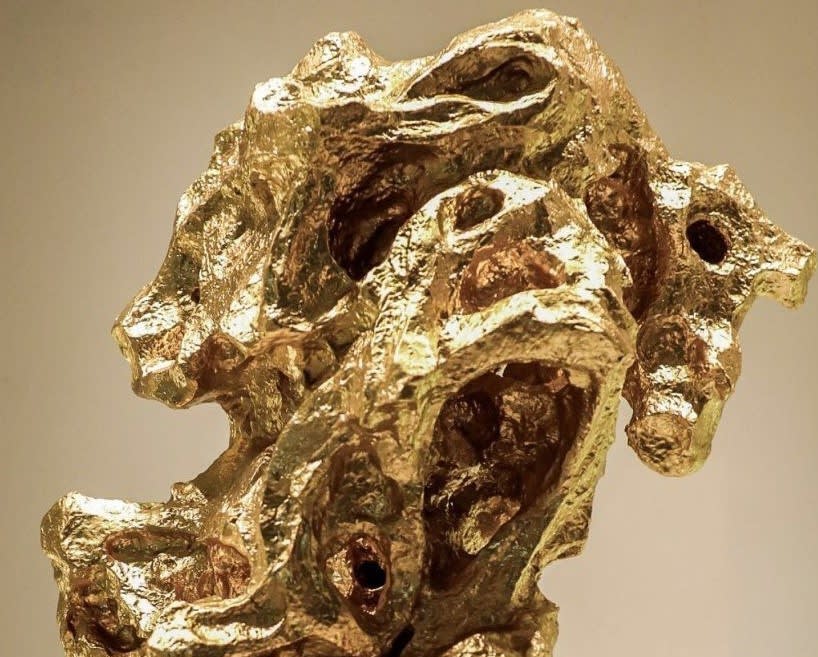
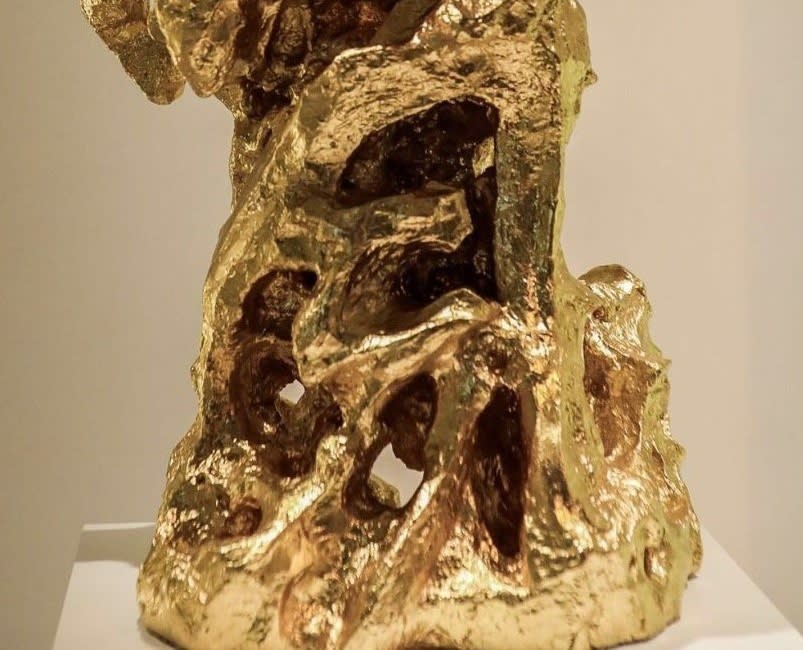
Mi Fu, the renowned stone connoisseur and collector of the Northern Song dynasty, mentioned “Shou (thin), Tou (openness), Lou (see-through forms) and Zhou (jagged surface)" as criteria of scholar's rocks. The unique, spectacular form and resemblance to the natural landscape and real objects adds to the jagged and varied character of this ‘calico’ Lingbi scholar’s rock. Absorbing the natural characteristics of scholar's rocks, Ren Tianjin incorporates his written calligraphic characters 'East' (depicted in the upper half of the sculpture) and 'Wind' (the lower half) into the sculpture of his scholar's rock, combining the grooves and gullies of the stone itself with the subtle fluidity and rigorous structure of Chinese calligraphy. It unleashes the semantic diversity of the artistic symbols and guides the viewer to follow the surface and material texture of the work to discover the collision and fusion between different epochs and cultures, adding to the solidity of this work. It reminds viewers of the experience of appreciating nature’s beauty. As Robert D. Mowr once said, “Like a landscape painting, the rock represented a microcosm of the universe on which the scholar could meditate within the confines of his studio or garden.” This work is embedded with the contemporary narrative, which reveals the charm of its Eastern heritage. East Wind is a sculpture that celebrates Chinese calligraphy and scholar's rocks, the cherished tributes to the natural world.
